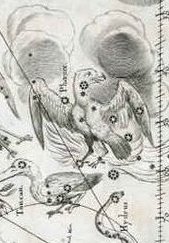Maybe the Mamari text was created before the news of Neptune reached the island. Maybe the text was an attempt at preserving the old model before it was completely destroyed by the new invisible planet. In either case we could guess the Uranus symbol adopted in the rongorongo texts had to be slightly changed from what we ourselves are accustomed to:
This little table is only an attempt at preserving the ideas we have recently discussed and no attempt to suggest there indeed were such quite similar vero glyphs for Saturn, Uranus, and Mars. The evidence so far is not enough. Counting ahead from vero in position 362 to the end of side b means going ahead with 740 - 362 = 378 (Saturn) steps:
Moving on we can then continue with another 378 steps to the 2nd exactly alike vero:
Or we could continue with only 362 steps in order to reach to the beginning of our cycle
The latter path seems more reasonable, because 1102 - 366 = 736 (= 740 - 4). Once again, we could alternatively begin from vero in position 378 and move to the end of side b:
This excercise appears to 'prove' we should end the calendar cycle (not the star cycle) with vero in Ca13-19 (362):
From there to the 'First Point of Aries' there was a month, and 366 - 30 = 336 = 48 weeks = 24 fortnights = 12 * 28. Side b carries 12 * 29 (= 348) glyphs and 336 + 348 = 684. Accordingly there appears to be not only 8 days 'missing' but 56 because 740 - 684 = 56 (8 weeks). However, the Uranus double cycle (740) means travelling past its end twice. I.e. 56 = 2 * 28. 56 + 336 = 392 (number of glyphs on side a) = 14 * 28. Possibly a calendar sequence began with te vero in March 27 (*Ca14-9, 372) and ended after 2 years with March 17 (Ca13-19, 362). Because 1102 - 372 = 730 = 2 * 365:
393 (Cb1-1) - 372 (*Ca14-9) + 347 + 362 = 730 = 2 * 365. At Ca13-20 we surely must count 13 * 20 = 260 because September 17 was Gregorian day 260, when in rongorongo times no prominent star was close to the Full Moon (in position 180). March 27, at the beginning of the suggested double 365-day cycle, was the day after the pair of leading 'eyes' of the Phoenix rose heliacally.
|



